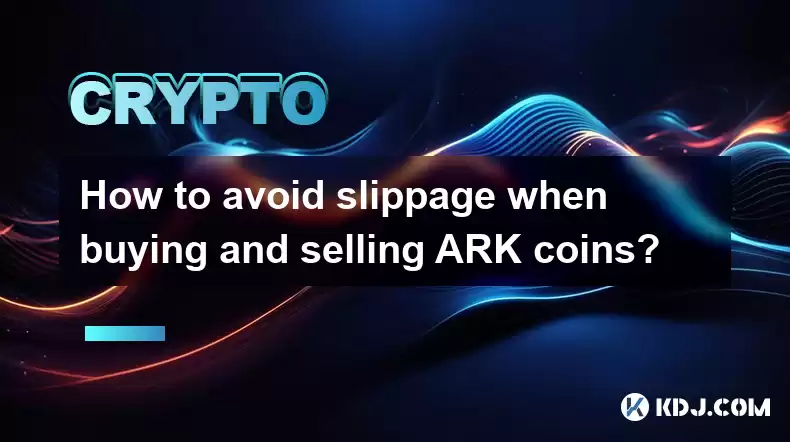-
 Bitcoin
Bitcoin $118000
0.67% -
 Ethereum
Ethereum $3750
0.71% -
 XRP
XRP $3.183
1.61% -
 Tether USDt
Tether USDt $1.000
-0.01% -
 BNB
BNB $788.1
1.21% -
 Solana
Solana $186.0
0.85% -
 USDC
USDC $0.9999
-0.02% -
 Dogecoin
Dogecoin $0.2373
1.25% -
 TRON
TRON $0.3204
1.76% -
 Cardano
Cardano $0.8266
1.85% -
 Hyperliquid
Hyperliquid $44.04
1.28% -
 Sui
Sui $4.192
5.88% -
 Stellar
Stellar $0.4399
2.63% -
 Chainlink
Chainlink $18.40
1.19% -
 Hedera
Hedera $0.2842
9.06% -
 Bitcoin Cash
Bitcoin Cash $560.5
2.46% -
 Avalanche
Avalanche $24.99
4.58% -
 Litecoin
Litecoin $114.5
1.25% -
 UNUS SED LEO
UNUS SED LEO $8.980
-0.03% -
 Shiba Inu
Shiba Inu $0.00001406
0.53% -
 Toncoin
Toncoin $3.306
4.27% -
 Ethena USDe
Ethena USDe $1.001
0.03% -
 Polkadot
Polkadot $4.169
2.37% -
 Uniswap
Uniswap $10.56
1.95% -
 Monero
Monero $322.8
1.06% -
 Dai
Dai $0.0000
0.00% -
 Bitget Token
Bitget Token $4.545
0.12% -
 Pepe
Pepe $0.00001261
1.29% -
 Aave
Aave $296.5
1.27% -
 Cronos
Cronos $0.1379
5.90%
How to avoid slippage when buying and selling ARK coins?
By choosing the right liquidity providers, placing limit orders, and trading during low-volume periods, the slippage impact on ARK coin trades can be effectively minimized.
Dec 28, 2024 at 02:11 pm

Key Points
- Understanding Slippage and Its Causes
- Strategies for Minimizing ARK Coin Slippage
- Advanced Techniques for Reducing Slippage
- Monitoring and Adjusting Your Trades
Strategies for Minimizing ARK Coin Slippage
1. Choose the Right Liquidity Providers
Slippage is directly influenced by liquidity. Platforms with higher liquidity will have tighter bid-ask spreads, reducing slippage. Research and identify exchanges and liquidity providers that offer substantial ARK coin trading volumes.
2. Place Limit Orders
Limit orders allow you to specify the exact price you are willing to buy or sell ARK coins. By setting your order within the current market spread, you can control the maximum slippage you are willing to accept.
3. Use Market Depth Data
Market depth data provides a graphical representation of order book depth, indicating the number of orders at different price levels. Analyze the depth data to identify hidden liquidity and potential areas of slippage.
4. Trade During Low-Volume Periods
Trading during hours of low market activity can reduce slippage as there are fewer orders competing for execution. Avoid peak trading times when liquidity is lower.
5. Break Down Large Orders
If you have a substantial ARK coin order to execute, consider splitting it into smaller ones. Smaller orders have a lower impact on the market, minimizing overall slippage.
Advanced Techniques for Reducing Slippage
1. Use Slippage Tolerance
Some platforms offer slippage tolerance settings that allow you to specify the maximum amount of slippage you are willing to accept. By setting a tighter tolerance, you can limit the potential impact of slippage.
2. Consider Post-Only Orders
Post-only orders are a special type of limit order that does not immediately take liquidity from the market. The order is only executed if it can be filled without any additional slippage.
3. Split and Cross Orders
Split and cross orders involve placing multiple orders at slightly different prices. By leveraging this strategy, you can increase the likelihood of executing a portion of your order with minimal slippage.
Monitoring and Adjusting Your Trades
1. Monitor Trade Execution
Pay attention to the execution price of your trades to identify any significant slippage. If slippage exceeds your expectations, consider adjusting your order strategy.
2. Adjust Order Size and Placement
If you encounter excessive slippage, try reducing the size of your orders or adjusting their placement within the market spread. Alternatively, consider using advanced techniques discussed earlier.
3. Monitor Market Conditions
Stay informed about market conditions that can affect liquidity and slippage. Keep abreast of news, events, and whale activity that may influence ARK coin prices.
FAQs
What is slippage in cryptocurrency trading?
Slippage is the difference between the expected and actual execution price of a trade. It occurs when the market price changes rapidly during order execution, resulting in a deviation from the desired price.
How can I measure slippage?
Slippage can be measured by calculating the absolute difference between the order price and the executed price. It can be expressed as a percentage of the order value.
What are the factors that contribute to slippage?
Market liquidity, trading volume, order size, and market volatility can all contribute to slippage.
How can I minimize slippage when buying or selling cryptocurrencies?
Choose reputable exchanges, use limit orders, analyze market depth data, trade during low-volume periods, and consider advanced techniques such as slippage tolerance and split and cross orders.
Disclaimer:info@kdj.com
The information provided is not trading advice. kdj.com does not assume any responsibility for any investments made based on the information provided in this article. Cryptocurrencies are highly volatile and it is highly recommended that you invest with caution after thorough research!
If you believe that the content used on this website infringes your copyright, please contact us immediately (info@kdj.com) and we will delete it promptly.
- Meme Coins in July 2025: Bitcoin Takes a Backseat?
- 2025-07-27 10:30:12
- HIFI Price Eyes Breakout: Downtrend Line in the Crosshairs?
- 2025-07-27 10:30:12
- Troller Cat's Meme Economy Prowess: Presale ROI and Viral Domination
- 2025-07-27 10:50:12
- Bitcoin Price Tumble: Chart Patterns Point Downward?
- 2025-07-27 10:50:12
- Ethereum's Bullish Case: Flag Pattern Points to $4,800?
- 2025-07-27 11:10:18
- Ethena (ENA) & Anchorage Digital: A Genius Partnership Sparking a Stablecoin Revolution
- 2025-07-27 11:10:18
Related knowledge

What is Chainlink (LINK)?
Jul 22,2025 at 02:14am
Understanding Chainlink (LINK): The Decentralized Oracle NetworkChainlink is a decentralized oracle network designed to bridge the gap between blockch...

What is Avalanche (AVAX)?
Jul 22,2025 at 08:35am
What is Avalanche (AVAX)?Avalanche (AVAX) is a decentralized, open-source blockchain platform designed to support high-performance decentralized appli...

What is Polkadot (DOT)?
Jul 19,2025 at 06:35pm
Understanding the Basics of Polkadot (DOT)Polkadot (DOT) is a multi-chain network protocol designed to enable different blockchains to transfer messag...

What is Litecoin (LTC)?
Jul 23,2025 at 11:35am
Overview of Litecoin (LTC)Litecoin (LTC) is a peer-to-peer cryptocurrency that was created in 2011 by Charlie Lee, a former Google engineer. It is oft...

What is Monero (XMR)?
Jul 21,2025 at 10:07am
What is Monero (XMR)?Monero (XMR) is a decentralized cryptocurrency designed to provide enhanced privacy and anonymity for its users. Unlike Bitcoin a...

How to add indicators to Ethereum chart on TradingView?
Jul 19,2025 at 07:15am
What Is an Ethereum Chart on TradingView?The Ethereum chart on TradingView is a visual representation of the price movement of Ethereum (ETH) over a s...

What is Chainlink (LINK)?
Jul 22,2025 at 02:14am
Understanding Chainlink (LINK): The Decentralized Oracle NetworkChainlink is a decentralized oracle network designed to bridge the gap between blockch...

What is Avalanche (AVAX)?
Jul 22,2025 at 08:35am
What is Avalanche (AVAX)?Avalanche (AVAX) is a decentralized, open-source blockchain platform designed to support high-performance decentralized appli...

What is Polkadot (DOT)?
Jul 19,2025 at 06:35pm
Understanding the Basics of Polkadot (DOT)Polkadot (DOT) is a multi-chain network protocol designed to enable different blockchains to transfer messag...

What is Litecoin (LTC)?
Jul 23,2025 at 11:35am
Overview of Litecoin (LTC)Litecoin (LTC) is a peer-to-peer cryptocurrency that was created in 2011 by Charlie Lee, a former Google engineer. It is oft...

What is Monero (XMR)?
Jul 21,2025 at 10:07am
What is Monero (XMR)?Monero (XMR) is a decentralized cryptocurrency designed to provide enhanced privacy and anonymity for its users. Unlike Bitcoin a...

How to add indicators to Ethereum chart on TradingView?
Jul 19,2025 at 07:15am
What Is an Ethereum Chart on TradingView?The Ethereum chart on TradingView is a visual representation of the price movement of Ethereum (ETH) over a s...
See all articles

























































































